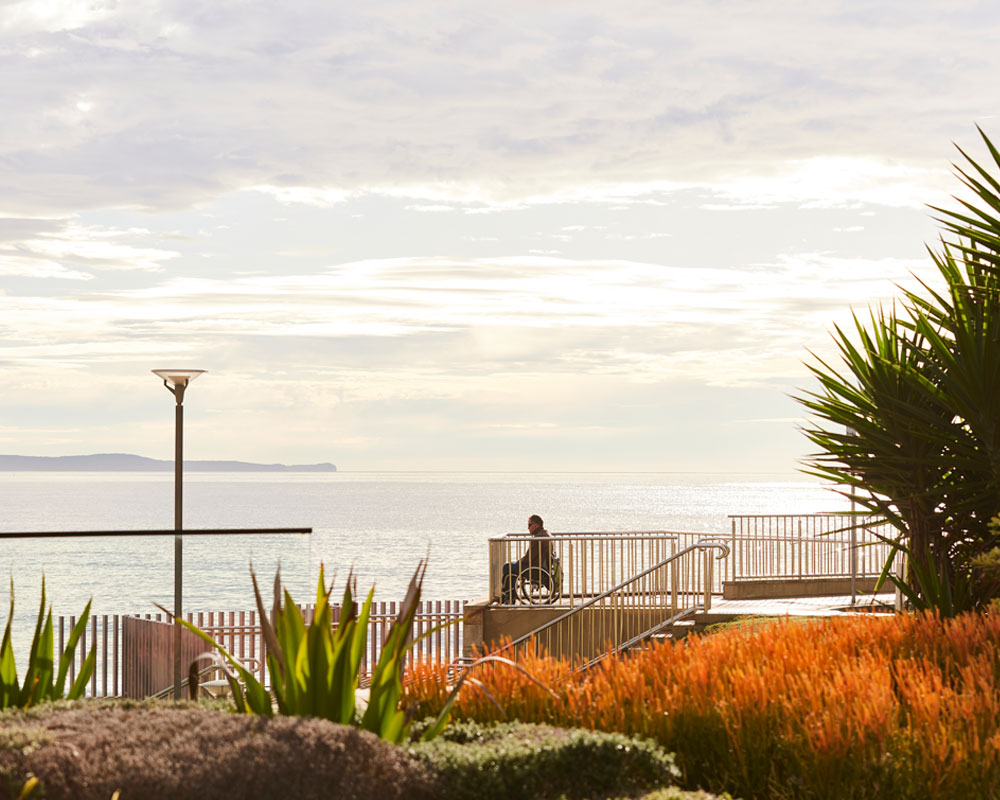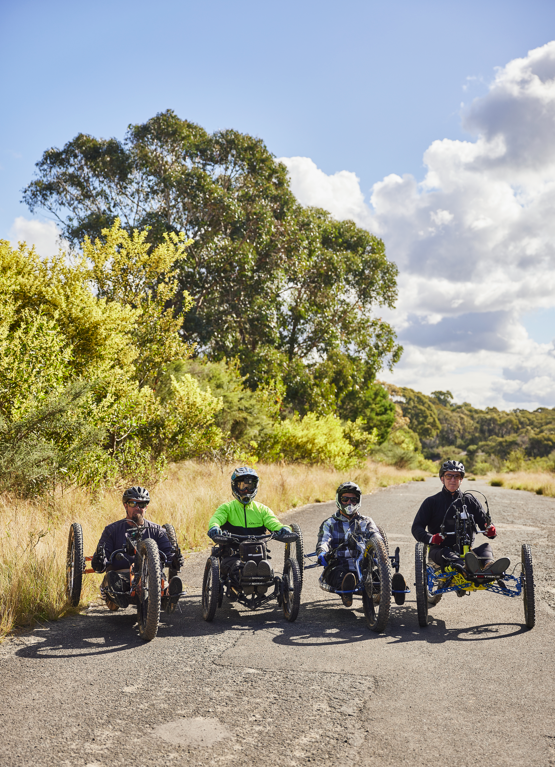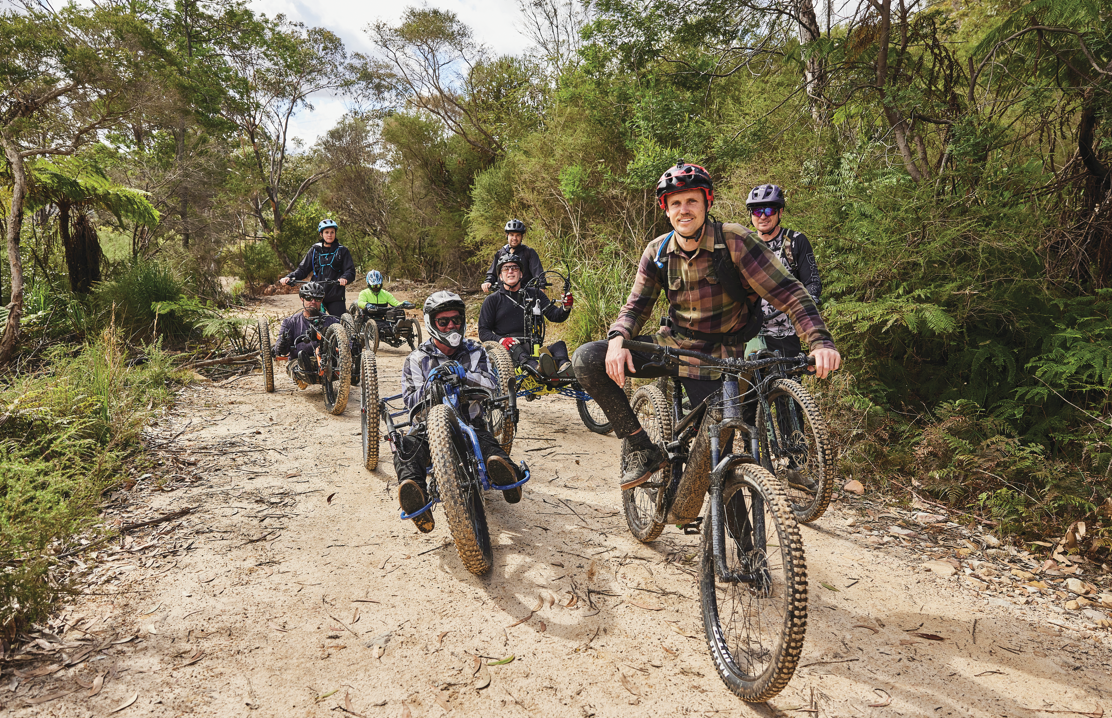Accessibility isn’t a constraint. It’s an opportunity.
Too often, accessibility standards and inclusive design principles are an afterthought in the creation of an experience. Inclusive design is seen as a barrier, or inconvenience, rather than how it should be viewed: as an opportunity to design more intentionally and universally, so that everyone who shows up to the experience can enjoy it equally, whether they have a disability or not.
When you realise that around 10%, or 650 million, of the world’s population identifies as having a disability, it’s clear that we need to rethink our approach to designing for disability. According to Beth Rypkema, the disabled market has over $21bn of discretionary income annually in the US alone – more than the African American and Hispanic populations combined.
If you’re looking for guidance on how to start proactively designing for inclusion in your experiences, Sargood on Collaroy, a resort located on Sydney’s Northern Beaches in Australia, is the world’s first resort purpose-built for people with spinal cord injury (SCI).
It’s also a perfect example of an environment that has been designed for all abilities from the very beginning, using Universal Design principles and aligning around a purpose to increase independence and confidence for those with SCI.
The 17-room resort won an Architecture & Construction Award when it opened 8 years ago, and has since attracted guests from all over the world. 40% of those guests hadn’t travelled since their injury. Now, Sargood has an 86% return rate.
Sargood is designed to be functional and accessible, but not look like a hospital. Guests of all ages are welcome, along with their families, partners and carers. As well as a thoughtful and functional building design, Sargood offers activities and experiences that many thought they would never be able to do again. The intention is to provide a place that people want to keep coming back to, that caters for all their needs and doesn’t remind them of rehab.
Sargood’s Executive Director, James Dakin, shares his key lessons for how we can all become “Extremely Accessible” and champion fully inclusive design in our experiences using accessible design,, technology, technique, and attitude, whatever they may be.
1. Begin With The Bad, The Good, & The Missing
Thinking about accessibility should start before you even put pen to paper, and revolve around these 3 questions:
- What already exists that’s good?
- What already exists that’s bad?
- What’s missing from the experience?
When it comes to accessible travel, the key concern for Sargood, the “good” is that there are bespoke homes and rehab units out there. However, these are usually designed for only one person or family. Many people also don’t want to return to a rehab unit after they’ve spent months recovering in one.
The “bad” was every “accessible” holiday experience beforehand that had led to frustration and disappointment. The people Sargood spoke to had often had terrible experiences – accessible hotel rooms featuring narrow doors or steps on the way into the hotel, for example.
Finally, when it comes to the “missing” many so-called accessible destinations still require you to bring your own equipment, which can be extremely expensive, difficult, or go missing en route. There are usually no carers at the hotel trained in your specific needs or who know your history.
It can be a big deal for those living with disability to leave the safe space of their homes. The outcome of all these barriers is that it’s disrespectful to those who do have the confidence to try, and can even curtail the dream of travel altogether. The design of the experience was therefore intended to fix all these problems from the very outset of the project.
2. Design For Dignity & Respect
Sadly, many people living with a disability are used to a mediocre experience. Dakin believes that’s not good enough, and that they deserve to be treated with the same dignity and respect others are afforded through clever design, sensitively using technology, showing different techniques, and always having an attitude of “don’t say no”.
One of the ways Sargood does this is through a Universal Design concept, employing people who design resorts and other beautiful buildings to architect the resort, not hospital designers. The rooms are designed not to look like hospital rooms, with equipment being kept hidden unless it’s being used.
The gym has specialised machines that people can roll their wheelchairs into, and rather than moving the pins and weights manually, they can set their resistance on a screen. There’s street access to the building at every level, no stairs, and it can function without the use of lifts if needed. The lifts themselves are huge with exits from both sides so people don’t have to exit backwards, and the walkways in the resort are wide. All the medical equipment they need is provided, so that guests don’t have to haul items like hoists, slings and commodes with them.
Finally, it can be the smallest touch that signifies that things are being done differently to what you might expect. At rehab, you wouldn’t expect pillow chocolates, for example – these little elements go a long way to creating an atmosphere people want to return to.
3. One Size Fits None

When you think of accessible accommodation, you probably picture much the same thing: a room that looks like a hospital room, with arm and back rests, a wider doorway, and safety alarms. But as Dakin says, “one size fits none” when it comes to disability. Everyone’s needs are specific, and need to be taken as such.
In Sargood’s guest rooms, there are options to customise the layout to the person’s needs – by adding or removing arm or back rests, for example, or giving a choice of mattresses. There’s a continual process of improvement, taking ideas from clients and adding things. The approach is descriptive, not prescriptive.
4. Cater For Connection With Loved Ones
Many accessible travel destinations only cater to the guest with a disability, and not their families and friends. Although singles are welcomed, Sargood is also able to cater for families with interconnecting rooms so that guests don’t have to be dropped off alone or with a carer.
By designing the best experience for guests and their families rather than maximising the number of rooms, they can enjoy experiences together. The resort also takes on the logistical load of equipment and personal care, so that guests can hop on a plane and travel with their family, and families are free to focus on being together. Guests from 3 to 90 are all welcomed.
Sargood also creates an environment where guests can meet similar people, swap tips over a glass of wine, and form genuine relationships when they leave. Rather than group therapy swapping war stories, there’s a sigh of relief that they don’t need to explain their disability, but will be understood from the get-go.
5. Make The Experience Active, Not Passive
Disabled people are often used to watching other people have fun. But Sargood insists that their activities are truly “active” – people come for adapted recreational activities including surfing, snorkelling, scuba diving, mountain biking and more, as well as an accessible gym.
If guests want to do something that isn’t on the menu, the team will also find a way to make it happen. For example, SCI patients sometimes have problems with their hands that makes off-the-shelf, remote-controlled boats or cars hard to use. The Sargood team made some adaptations so they could control them using their chin or with a lever.
Rather than spending thousands of dollars on custom setups, they run courses to show people how to use 3D printers to make their own modifications and designs, opening up possibilities once home.
6. Your Guests Are The Experts. Design With Them, Not For Them
Even if we have the best intentions around inclusive design, we can’t see the day-to-day challenges that people encounter unless we’re experiencing them ourselves.
If the true experts in designing an experience are the participants themselves, then co-designing with them rather than for them will result in a better experience. Rather than copying competitors, listen to your clients and provide spaces where they can give feedback.
7. Hire For Attitude, Not Skills
As a hospitality and disability hybrid, Sargood has a mix of staff members from both backgrounds. However, their secret weapon are their 40 guest attendants – who Dakin chooses to hire not for their skills, but for their attitude.
In fact, previous learned bad habits can actually be detrimental. More important is emotional intelligence, clear communication, and the ability to strike up a rapport with guests.
To hire for this attitude, Dakin asks people to teach them something in five minutes at the end of an interview. If they have the right attitude, he’s confident that they can teach them the skills. As a result Sargood has become a training ground for carers and they’ve also built a culture of sincere customer service and care.
This extends to the adaptive rec team, who are not only experts in their discipline, but who are also trained to care for someone respectfully and discreetly.
8. Set A Culture Of Innovation

In the hospital world, there can be fear around trying new things, or not enough money to make them happen. At Sargood, they try to find the time and money to both listen to guests’ ideas and make them happen.
The innovations they come up with along the way – redesigned table tennis paddles, or brackets to help trim nails without the help of a carer, for example – are made open to the public so that individuals can use and benefit from them.
They also list all the equipment they use so that guests are aware of the options and can potentially integrate them into their home lives. Not all of these innovations are expensive: many are cost-effective, simple, and easy to replicate.
The WXO Take-Out
We can’t necessarily be as targeted as Sargood in the experiences we design, which have to cater to a broad audience rather than one disability.
However, the inclusive design principles and accessibility guidelines that the resort uses show that by just by asking what we could do better, including disabled people in the design process, solving the small, everyday problems, and always designing for dignity and respect, we can make a huge impact in the experience of those with access issues and their families.
As Dakin says:
“We can’t work miracles, but we can put thought into it and show them that they’re not being forgotten. It might not be possible, but the fact they’ve been asked makes all the difference.” James Dakin
So next time you’re designing an experience, ask yourself:
- At what point do you usually think about accessibility in your experience design?
- What examples of good (or bad!) inclusive design stand out from your experiences?
- How might you bring inclusive design into your process earlier?
Want to come to live Campfires and join fellow expert experience creators from 45+ different countries as we lead the Experience Revolution forward? Find out how to join us here.





